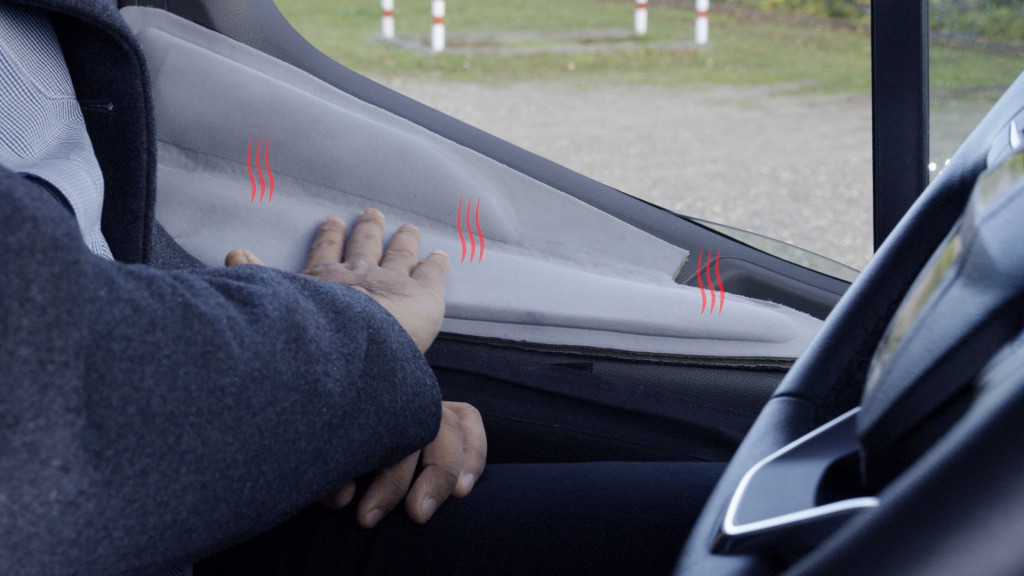In cold weather, energy needed to heat vehicle interiors can negatively impact EV range. Ford claims its engineers have found a solution—for delivery vehicles, at least.
As part of a research project with the European Commission, Ford engineers fitted an E-Transit deliver van with heated armrests, floor mats, door panels, and sun visors, as well as a heated panel below the steering wheel, the automaker explained in a press release. The engineers found that this method of heating surfaces could extend range compared to the conventional method of blowing hot air into the vehicle’s cabin.
Ford E-Transit with experimental heated interior surfaces
Both heating methods require battery power, but engineers found that heating surfaces rather than air reduced energy consumption by 13%, which the automaker claims equates to a 5% increase in range based on real-world charging patterns.
Testing involved deliveries in and around Cologne, Germany, in summer and winter, on dry and wet roads, and in heavy rain and wind, according to Ford. Delivery service also meant doors and windows were opened frequently, meaning heat generated via the climate control was lost more quickly in cold weather, while heated surfaces tended to stay warm, the automaker noted.

Ford E-Transit with experimental heated interior surfaces
While not exactly comparable to passenger-car use cycles, data from the test can be incorporated into range calculators used by commercial fleets to improve accuracy.
The automaker is also testing other potentially energy-saving features, including: a heat exchanger that uses water heat from the drive unit to heat a vehicle’s interior and/or battery pack, a battery cooling system and “smart fast charging” for battery pre-conditioning, eco-routing to maximize range will accounting for charging stops, and a powertrain conditioning function that optimizes temperatures for maximum efficiency.

Ford E-Transit with experimental heated interior surfaces
Driven by the need to reduce the range drop in cold weather caused by heating, engineers at other automakers and suppliers have come up with a range of solutions—including heated seat belts. BMW has also experimented with infrared heat, which would be targeted to surfaces and even occupants, without heating the air in between.
Other automakers have settled on heat pumps as a net positive for cold-weather range—in most cases outweighing the additional complexity. Tesla is now putting them in its vehicles, and General Motors has said heat pumps in its EVs could give them a real-world range advantage.
